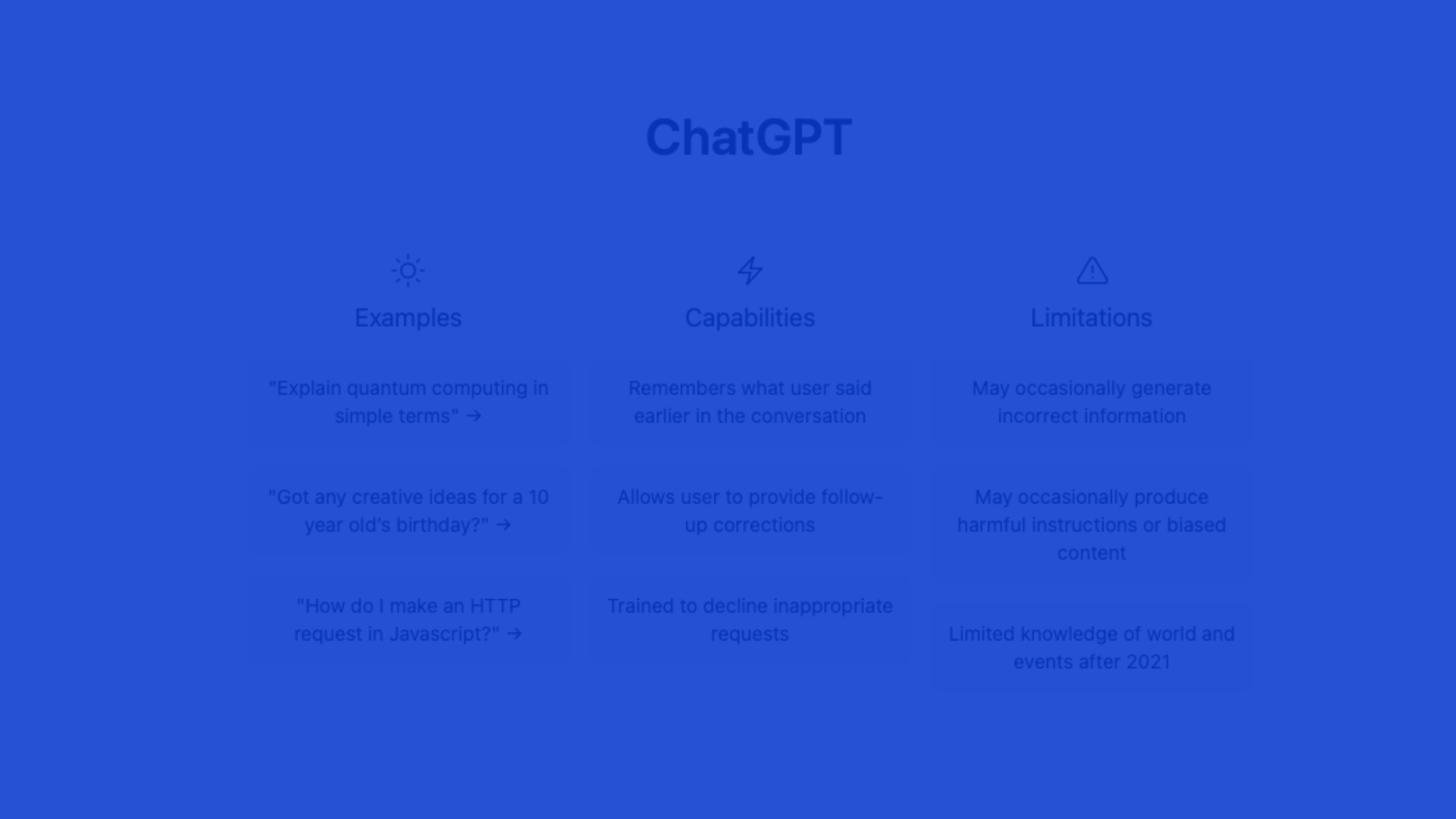Online presence is the most preferred way of Marketing. Every business starting from a small scale to multi-billion corporations is spending a huge amount of money for attaining an online presence for their products and or services.
They spend the money on various digital marketing strategies like social media presence, local branding, websites, content marketing, paid advertisements, display marketing, etc. Most of them also investing in their visibility of content or brand. Yes, visibility makes sense. Attractive websites or informative content without visibility is useless and a waste of money and effort.
So it is very important to put money, effort, and time into achieving visibility of website/content to the audience and hence attain a good business conversion. SEO is the ultimate tool for that. But we still learn about SEO a thing or two and people are asking us all the time for an SEO basics primer. This article would include an explanation and description of everything that needs to know about search engine optimization (SEO), a mandatory marketing technique if you wish to reach your website by various search engines.
What is SEO and Why is it Important?
SEO stands for “search engine optimization,” which is the method of bringing traffic to search engines from the free, organic, editorial, or natural search results. SEO consists of several different components, so knowing what they are and how they work is crucial to understanding why SEO is so important. In short, SEO is relevant because it makes the website more accessible, which means more visitors and more chances for consumers to sell prospects.
It is also a powerful resource for brand recognition, establishing relationships with prospects, and placing yourself as a respected and authoritative expert in your industry. Also, SEO is one of the few online marketing platforms which can continue to pay dividends over time when set up correctly. If you’re delivering a decent piece of content that deserves to rank with the right keywords, your traffic will snowball over time, while advertising needs constant support to bring people to your site.
Four pillars to build an SEO strategy
Before diving into the framing process of SEO strategy, it is very important to find the proper answer to the following questions.
1. How Does Your Website Work?
Web designing has a very huge role in making an SEO strategy successful. Neat website structuring helps improve the user experience and makes easy to navigate. The technical fitness of the website also an essential factor. If a website is technically unfit it is very difficult to attain good ranking or visibility.
2. Who Are Your Real Competitors?
There is no pre define strategies for SEO to achieve your niche. One option is trial and error, which is implementing an SEO strategy and monitoring whether it is a success or not. But this method may lead to waste a huge amount of money, time, and effort. Another way is finding your true competitor who achieved good visibility and analyzing their website as a reference. You might have market competitors, but they are not who consider here. Instead, consider online competitors who already attained good visibility for keywords that really matter for your business.
3. What is Your Business Goal (North Star goal)?
Defining a proper business goal (also called North Star metrics) is the fundamental factor for SEO strategy building. Without setting any North Star goal it is very hard to build an SEO strategy and it will end up with no result. The strategy should frame around a particular goal (North Star goal) without deviation helps to produce a good end result.
4. What All Key Enablers Are Required?
It is not possible to conduct technical auditing, competitor analysis for backlinks, and keywords and keyword research manually. There are a number of tools available for each.Identifying the appropriate tools that will help you to achieve the SEO goals. I will include my tool suggestion for every process of SEO later in this article.
Factors Influencing in Building an SEO strategy
Several factors influencing the framing of SEO strategy. Before structuring a strategy all these factors should be considered.
- Strengths of Your Website
Better understanding about the size, authority, and reputation of the website really helps to structure bespoke SEO strategy for your site. By knowing the size you will get a clear idea about the time and effort required to implement and what kind of strategy to be brought into action. Authority and reputation of a site clearly indicate the time required for takeoff (time taken for getting output).
- Your Industry
It is difficult to attain good results in SEO for certain industries since already exists so many powerful competitors in online. But still, it is not an impossible task. You should able to think from a user’s perspective and figure out what they possibly expecting from you. Focus on such potential requirements (as keywords) of the user and furnish the site according to achieve the best user experience.
- Competition Landscape
Your top SEO competitors are the ones that list the keywords you are pursuing in the first results page, regardless of whether they are your rivals in the industry. When you are competing in several niches, you can also have different competition lists for each company that you sell, with little or no correlation between them. Luckily, figuring out who your rivals are is as simple as entering the top keywords in Google, and writing down the major competitors’ domains. Analyzing competitors will help to wire the best SEO strategy for your business.
- Your Market Bandwidth
Potential bandwidth of the market determines the type of SEO strategy. If you want to improve the international visibility of brand international SEO is the best way. Local SEO is more suited for attaining visibility in the local area. Choosing both also is an option for potential businesses.
- Type of Your Website
While building a strategy this also should be taken into consideration. Every type of website (types: E-commerce, service, Forum, blog, news, etc) having different approaches for SEO to achieve fruitful outcomes. SEO strategy building for one may not be a workout for others.
- Your Business Goal (North Star Goal)
SEO strategy implementation without a goal is always to end up with regrets. Converging SEO works for a particular target is the best idea. Setting a North Star goal, finding KPIs (key performance indexes) to achieve that particular goal, and working on it lead to a successful outcome.
- Your Budget and Resources
Definitely SEO requires lots of time and effort. If you are hiring an agency it is expensive. Generally, SEO tools customize the website for achieving strong search engine performance. The tools required for working out the best optimization process are premium. So the budget is an unavoidable factor that determines how better your site ranks.
What is a SEO Roadmap?
An SEO roadmap is a strategy guide that is used by a company to keep track of all SEO-related operations, remove mistakes, and streamline decision making. The roadmap provides descriptions of any strategy used or planned by the organization to launch its SEO efforts. It also describes the main roles when implementing each strategy, as well as different workflows and basic operating procedures.
A roadmap helps to keep everyone on track and eliminates the risk of possible mistakes. What’s more, it informs all stakeholders interested in SEO progress on your actions, plans, and procedures to achieve them.
Roadmap mainly focuses on:
• The current state of your SEO activities.
• Rapidly wins that you can introduce with little effort to produce significant results.
• Subject and keyword analysis.
• Content audit results.
• Technical audit results.
• Upcoming strategies
Key Areas
Keyword Analysis for the Best Result in SERP
Keywords are words or text phrases that help search engines recognize the topics covered by your content. Algorithms have advanced mechanisms for evaluating the keywords used by users in their requests, as well as the terminology used in a specific piece of content. This lets them tailor the material to the user that best fits their needs.
Keywords became the main way of explaining the subjects you explored to search engines prior to semantic search. Generally speaking, the more often you used the keyword the more important the content is. Unfortunately, this led to activities such as keyword stuffing intended to trick the search engine and eventually damage the user experience. Throughout the last two years, Google has launched numerous enhancements intended to help explain the ideas found within the application and website.
Instead of picking out keywords, the search engines look at how various topics are related in order to better explain the information the material covers and how it responds to various queries. Thus, they are able to return users more accurate and appropriate search results, improving the user experience.
Choose Appropriate Keyword
As you know that Google doesn’t try to align a data string in a database with a data string in a given post, you don’t need to worry making those keywords used in the piece a certain number of times. Alternatively, you can use keyword analysis to familiarize yourself with the subjects that seem to be of the highest interest to your target audience. If you have defined the subjects, you can make changes to bring value to the search engine and to the customer reviewing the findings on the SERPs inside the text. In the title, H2 headings, the Meta description, and sometimes in the content, you can use your keyword, so that it is normal in all these instances.
Keyword Gap Analysis from Competitor Website
Keyword gap analysis is the technique to compare two or more rival domains to find certain keywords that are ranked for by competition, and you are not. The aim here is to pick one or two rivals or top websites in your niche. There are several advanced tools for this purpose.
Benefits:
• The quickest way to identify new opportunities.
• Discover keywords that worked for an established website.
• Identify usefully, and high-quality keywords in a minute.
• Find user’s queries.
Ways to perform:
• A tool for doing strategic keyword gap research.
• Spend dedicated hours.
• Use Google sheets to organize keywords.
Creating relevant and attractive content
It means writing content in such a way that the queries for the relevant keywords tend to rank higher. You use the keywords in the web page description or blog post and you use them creatively at specific sites. Ideally, the content would be optimized for both search engines and people.
While pushing content clearly doesn’t have a huge effect on your SEO, it’s the most critical part of your ranking strategy. There is nothing rankable if there is no content.
Here, I suggest top tips for the best content creation:
• Write for the targeted audience by using appropriate keywords.
• Should be readable.
• Intensify the content.
• Improve your page speed by focusing on text content.
• Structuring content suits for the snippet
• Do proper research
Some common pitfalls in content creation:
• Same content on different pages (Duplicate content)
• Repeatedly focusing on the same keyword for different content (Keyword cannibalization)
• To long or too short or irrelevant title tag
• Poor or no meta description.
• Improper optimization of images and videos (absence of alt attributes and large size image)
• Take more time to load the page (due to large size image, unnecessary plugins, CSS, HTML code, etc)
• Thin content
• Poor content
• Keyword misfocus
High Equity Backlink (Offpage)
Backlinks are a link that goes back to your site on another website. In the early days of search engines, the ranking algorithm used by Google depended almost entirely on the backlink portfolio of a website. Backlinks to your website are simply a signal to search engines that others are vouching for your content. When several websites connected to the same domain or page, search engines may assume the content is worth linking to, and therefore thus worth browsing on a SERP. Thus, receiving such backlinks will have a positive impact on the ranking status or popularity of the search for a site.
Inherently, some backlinks are more important than others. Followed backlinks are deemed the most valuable backlinks to receive from trustworthy, common, high-authority pages, whereas backlinks from low-authority, potentially spammy pages are usually at the other end of the spectrum. If a link is followed or not is definitely important but don’t ignore the importance of Nofollow links entirely.
Common pitfalls in backlinking:
• Links from or to bad reputation sites.
• Buying or selling links.
• Achieving nofollow links.
• Only trying to get backlinks from high PR sites (keeping the mix of high PR and low PR helps to yield good results).
• Backlink from the irrelevant site.
• Link without targeted keywords in the anchor text.
• Try to achieve lots of links (unnatural links) in the span.
Best practice for backlinking
- Analyze competitors for finding the potential sources of backlinks.
- Inspire from the type of content that competitor achieves backlinks
- Create great content that is worth sharing
- Backlinks from your own website
- Promote guest post write up
- Expand your online social network
- Collaboration on a creative project
- Accept backlinks from relevant sites or contents only
- Try to attain links from quality websites
Internal Linking for better and easy navigation
Internal links are hyperlinks leading at pages within the same domain. These are distinct from external links that link to pages on other domains.
Often, the internal connections help the PageRank float across the web. This is an immense issue. In general terms, the higher the internal connections a page has, the higher the PageRank. It’s not just about quantities though; the quality of the connection plays a critical role as well. Linking should be well structured in order to reduce crawl depth (crawl depth: depth of page from the home page) for each page in a site. And also it should help to improve crawl budget (crawl budget: is the number of pages on a website that Googlebot crawls and indexes within a given time frame.) for the site.
Internal linking best practices:
• Use proper and relevant anchor text
• Not only focus on links for the home page, deeper the link better the result.
• User-focused natural links that is relevant for them are required.
• Use follow links
• Use good enough number of links
• Create lots of content (increases number of internal links)
Technical SEO
Technical SEO refers to enhancing the technical features of a website with a goal to increase the search engine ranking of its sites. The foundations of digital optimization are making a website quicker, easier to crawl, and accessible for search engines.
Google and other search engines aim to answer their query to their users with the best answers possible. Google’s robots then search and test web pages on a number of criteria. Many variables, including how quickly page loads, are dependent on user experience. Certain considerations help search engine robots get a grip on the websites. That is what organized data do, and others. Therefore, you help search engines crawl and understand the web by enhancing the technical aspects. You could be awarded better ranks or even rich results if you do this well.
Common Technical SEO Issues
To prevent customer loss and maintain market growth, companies need to recognize and address rising on-site technical SEO problems with their websites. Most common technical SEO issues are mentioned here
• Speed of the site: Your website rating on SERPs depends a great deal on the speed of the platform. The quicker a website is, the better the user experience, penalizing slower websites that lead them to fall down the rankings. Google limits the number of crawlers sent to your website if the response time for the request is greater than 2 seconds.
• Broken links: Broken links will take up a toss with your crawl budget. If search bots discover so many broken links, they migrate to other websites, leaving uncrawled and unindexed valuable pages on your blog. Page authority on the website is also adversely affected.
• Duplicate content: Copied content not only impacts your scores but Google will also penalize your website. In reality, your site may lose the opportunity to rank entirely on SERPs.
• Unoptimized images: Image optimization problems are general, but if your website is not too reliant on them, you can save them for later. The two most common issues companies need to remedy are lost alt tags and misplaced pictures.
• Issue in title tag: Most common issues related to title tags are duplicate title tags or long/short title tags or no title tags.
• Unstructured URL: URLs finishing with the like.” .. index.php? P=263424 “means nothing to you – or bots to scan. They are not intuitive, nor are they user friendly.
• Lesser number of words: Always lengthy content have a chance for rank better in search engine.
• Issue in roborts.txt: Inappropriate usage of robort.txt file leads to a page indexing issue. If an URL is unnecessarily disallowed to crawl by robort.txt file, then a page that has links placed inside that particular URL not get indexed by the bot (unless there are no other links to those pages are present ).
• Misplacing of NOINDEX TAG: The NOINDEX directive can wipe each of your indexed pages off the Google Index. NOINDEX is useful in the development phase for websites since the directive prevents them from prematurely showing up in the search results of the users. But it does bring nothing but trouble for existing company websites.
• XML sitemap errors: XML Sitemaps notifies Google to your website business or its topic. So a lost or incorrect Sitemap is liable to relay inaccurate information about your website to Google. Not only do search engines have trouble deciphering the site’s contents, but the web site’s structure is still not known
• Worst mobile experience: The search empire lists websites based on their smartphone versions and it seems like an easy decision to be mobile-ready. Currently, not all websites are designed for mobile browsing, though.
• Low text compared to HTML: This indicates, poor loading of websites, leading to unnecessary and dirty coding or hidden texts a red flag for search bots or So much Html, inline style, and Javascript.
Site Auditing For SEO
A site audit is a method for determining the website’s search engine friendliness in various fields. Think of it as an important measure of the overall success of the website. Site audits can also be done to see whether there are areas for change within the site. Sorts of this report card helps define a website that is safe and easy to run relative to one that may have issues. Indeed, a site audit is one of the most important practices that an SEO will perform to improve user experience, create a higher awareness of the search, and more.
First, it’s a big undertaking which needs you to know what to analyze and how to draw conclusions from the results. Second, an audit of the website evaluates every aspect of the SEO of the site and the user experience. It looks at content, technical SEO, links – external and internal links, especially links broken – and more.
Complete site audit consisting of the following elements
- Conversion performance analysis audit — This method of website audit lets companies learn how people pass around their page, what activities they take (fill out a questionnaire, purchase goods, or otherwise), and what stops users from achieving their end goals.
- Health audit — This form of website audit assesses the website’s design and accessibility (on-site and technical SEO tracking, page speed, internal links, external links, and other considerations, including meta explanations, broken links, load times, page titles, and site structure). For SEO analytics, many use Google Analytics to assess their site’s overall usefulness-this is a perfect starting point for the site’s thorough audit.
- Security audit-Which detects data breach flaws. A compliance audit prohibits a company or its guests from losing confidential details.
- Content and SEO analysis – This method of analysis will help you understand how content on the website is doing. Web and SEO problems such as broken ties, wrong anchor text, and duplicate content affect the traffic to the web pages-just to name a couple. These are common issues for many large enterprise websites and therefore, a content audit or a technical SEO audience is imperative.
- Website audit of competitors – Learning what your competitors are doing is one of the most valuable ways to remain competitive in your market. You can discover ideas and strategies to integrate into your own digital marketing plan by auditing your competitor’s website.
- Google Penalty and Recovery Audit-Define fines that are either administrative or algorithmic problems and are determined through a method to provide site recovery solutions. This audit can expose issues about site speed or mobile page results.
Best SEO Tools for Achieving Goals
The machine is pretty much faster than humans. It is always better to leave them all SEO related analysis best tools. A strong tool represents the data in such a way that you can see the most critical elements of the study easily.
Best Tools for Keyword Research
- SEMRush
- Ahref Keyword Explorer
- Google Keyword Planner
- KWFinder
- Long Tail pro
- Majestic
- Keyword Tool
- Serpstat
- Moz Keyword Explorer
- Ubersuggest
Best Tools for Backlink Analysis
Best tools for Technical SEO
- Screaming Frog
- Google Search Console
- Google Analytics
- WebPagetest
- Google Page Speed Insight
- Google Mobile-Friendly Testing Tool
- GTMetrix Page Speed Reporter
- Ahrefs
- SEMrush
- Majestic
Conclusion
Working on the optimization of search engines and attaining targeted output is not an easy task. It is very important for an SEO agency in establishing good communication with business owners. Identifying KPIs (Key performance index) by analyzing north star goals and framing the SEO strategy accordingly. Then implementing this strategy to achieve the goal is the best way for optimization. Consistent auditing of sites, keyword updating according to relevance, checking for any new Google algorithm updates, and reaching new potential backlinks are the other important factor to maintain a good ranking position in SEPR.
In order to achieve good results in SEO, patience is very important. It usually takes four to six months (take-off period) to attain results by SEO. Always stay positive and keep the focus on the strategy, review your strategy if not gaining effective outcome.






